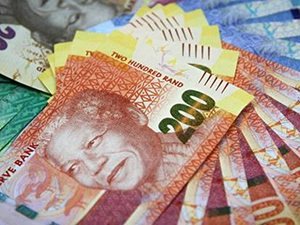
[miningmx.com] – WHENEVER the rand weakens there is always a discussion that whilst there are short-term benefits for mining firms, certain long-term national and economic demerits are implied.
Last year, emerging market currencies, including Argentina’s pesos and the Brazilian real weakened more than the rand – 45% and 36% – versus the 27% weaker rand.
This suggests that the decline in the value of the local currency was part of a broad sectoral view on emerging markets.
However, the year-end 10% collapse in the rand also pointed to political risks that marked South Africa out from its emerging market counterparts.
Said Bank of America Merrill Lynch in a recent note on political risk in South Africa: “In our view, the events of December highlighted most importantly that, for the time being, South Africa pulled back from the brink of a full-blown economic and political crisis.
“However, it may take time for question marks over the integrity of macro-economic institutions and its insulation from political interference to dissipate, in our view, leaving South Africa vulnerable to shifts in global investor sentiment,” it said.
The reference was to the madcap swapping of finance ministers in December which saw President Jacob Zuma fire incumbent, Nhlanhla Nene, only to replace Nene’s substitution, Desmond van Rooyen, with former finance minister, Pravin Gordhan some two days later.
In its view, Merrill Lynch reckons at least one credit rating institution will hand South Africa a sub-investment grade card during 2016. If this materilises, it will surely deal a blow to mining-related state-owned institutions such as Eskom and Transnet as they attempt to raise capital to finance their expansions.
The bank also revisited its view on the rand saying it would average around R17 during the year from a previous expectation of R13 to the dollar and that when the currency fought back it would be to R15 against the dollar; that is, not a full recovery to pre-2015 levels.
Citi took a similarly dim view of the currency’s future. It adjusted its outlook on the rand in a recent note saying it would be 23% weaker at an average of R16,50 against the dollar than its previous forecast for 2016 of about R13,38 to the dollar.
This is notwithstanding this week’s increase in the benchmark rate to 6.75% from 6.25% which some speculate could be the first of several hikes intended to protect the currency.
In the short-term, mining companies have been lapping up the boon that comes with higher rand denominated income whenever the currency takes a walk on the wild side.
According to James Wellsted, head of corporate affairs for Sibanye Gold, an average rand gold price of R550,000 per kilogram – which incidentally is a massive R80,000 more per kilogram than last year’s average – would be the equivalent of R4bn extra in revenue for the year. The rand gold price is currently about R575,000/kg.
Those benefits are short-term, however, argues Ross Harvey, a researcher at the South African Institution of International Relations. He says that the cheaper rand doesn’t sufficiently compensate for soaring production costs at home – a view Wellsted rejects: “We source 98% of our products from within South Africa so we are not that exposed to imports for machinery whilst we don’t operate underground vehicles so there’s little oil exposure,” he said.
Rand weakness is less protective when the commodity prices are heading south, however.
The currency weakness last year among Brazil, South Africa and Argentina barely compenstated against an average 28% decline in the iron ore price in 2015. The copper and platinum price were 27% and 31% weaker whilst the oil price was 30% lower, although as a consumer of oil, that would assist the mining sector.
Investors, however, weren’t perturbed as gold stocks – and others – flew off the shelves in the first few days of 2016 – a development that may be motivated by a slight improvement in the fundamental condition of the gold market, likely US Fed rate increases notwithstanding, and a view the rand may not much recover.
“The current market malaise may see the gold price firmer and the rand/dollar slide further which could prove a double whammy for the rand gold price and for the South African gold miners in our view,” said Allan Cooke, an analyst for JP Morgan Cazenove.
It is the third year in a row, South African gold stocks have shot out of the blocks at the beginning of the year. “In this scenario, the South African gold sector’s New Year rally has further to run, in our view,” he added.
Citi analyst Johann Steyn believed a gold stocks run propelled by the weaker rand, could be sustained: “This time, weakness has been driven by broad concerns about emerging market growth, exacerbated by fears of an SA credit downgrade to sub-investment grade in 2016.
“This has seen the ZAR [rand] gold price increase 20% over a short period of time to R600,000 per kilogram – a level we believe can be sustained in 2016,” said Citi’s Steyn.
Or take the view of Bernard Swanepoel, the former CEO of Harmony Gold and Village Main Reef. He remarked in a tweet: “Own South African gold shares in December, but remember to sell”.










